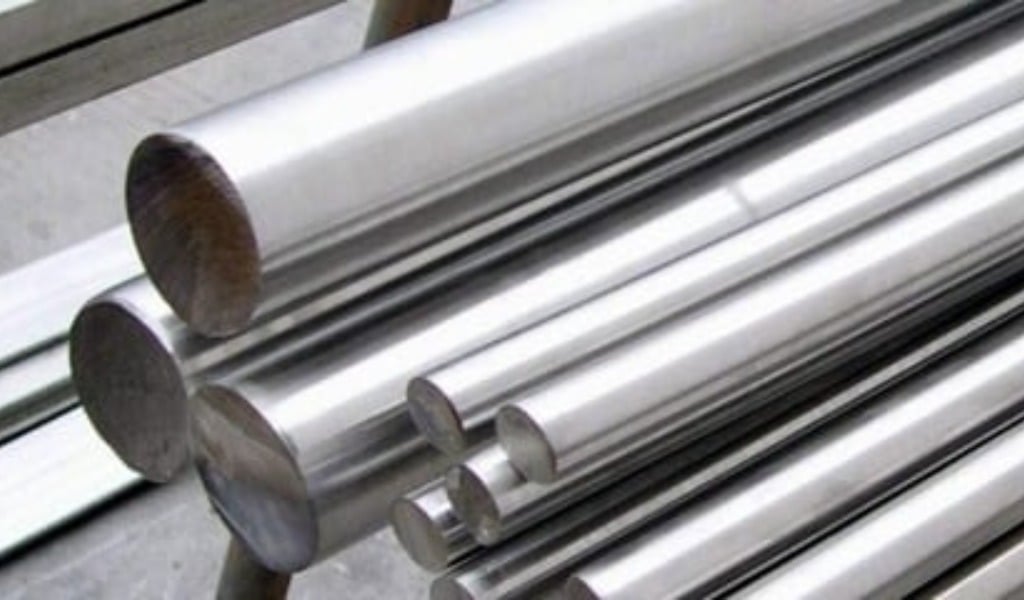The Impact of Chemical Wear on Wire Mesh Molds in Pulp Molding
When it comes to the molded pulp industry, you will find that the quality of your molded pulp products is a direct reflection of the quality of your wire mesh molds. They are the backbone of the quality and efficiency of your production line.
Despite the balance of precision and durability these molds present, the effects of harsh chemical exposure during the pulp molding process are an eventuality. Over time, the chemicals you use can compress the performance of your mesh and require costly maintenance.
But what exactly do we mean when we say chemical wear? How do you prevent it?
W.S. Tyler has been a prominent wire mesh supplier for over 150 years. We use the experiences we’ve had to empower you with the knowledge needed to overcome and avoid the most troublesome roadblocks, keeping your operation up and running.
With that, this article will shed light on the ins and outs of chemical wear, ensuring you are equipped to keep producing quality molded pulp products. It will cover:
- What chemical wear is and how it affects your pulp molding process
- The common chemicals used for molded pulp production that can harm your wire mesh molds
- The importance of preventing chemical wear
- What to consider when designing wire mesh molds for chemically rich pulp molding processes
Chemical Wear: What Is It and How Does It Affect Your Wire Mesh Molds?
When it comes to your wire mesh pulp and fiber molds, chemical wear refers to the gradual degradation of the mold's surface after being subjected to chemical reactions between the alloy of the mold and the chemicals used in your pulp molding procedure. This occurrence is particularly prominent during the pulp forming stage.
At its root, chemical wear is typically the result of exposure to aggressive acids, alkalis, solvents, etc. These substances are known to be relatively aggressive, causing various forms of corrosion, pitting, and material degradation.

This will ultimately alter the surface integrity of your mesh molds, compromise the weave’s accuracy, and weaken the structure of the mold. This could potentially riddle your final molded pulp products with defects like surface imperfections, weak points, and mold inconsistencies.
Not only will this negatively affect operational efficiency, but it could increase both product waste and maintenance.
Understanding the Chemicals That Could Potentially Damage Your Wire Mesh Molds
The chemicals that you should be mindful of in regard to degradation in your wire mesh molds ultimately depend on the proprietary details of your pulp molding process. That said, these chemicals are typically classified as an acid, alkali, solvent, or salt.
Acids
Acids are often introduced into the pulp molding process via cleaning agents or recycled pulp. These acids, commonly sulfuric and hydrochloric acid, are known to eat away at alloys such as stainless steel, aluminum, and copper.
All of which are alloys widely used to construct wire mesh molds for the production of molded pulp products.
Prolonged exposure to these acids will inevitably compromise the accuracy and durability of the weave.
Alkalis
Alkalis, such as sodium hydroxide and potassium hydroxide, are used for various cleaning processes common to the pulp molding process. They are also known to be an effective solution to control pH levels throughout the process.
That said, the improper use of or prolonged exposure to alkalis will eventually cause your molds to wear.
Solvents
Solvents, often introduced through various additives or cleaning products, are known to break down polymer and synthetic molds. Overexposure to solvents used in the pulp molding process will eventually compromise the integrity of the surface of your mesh molds.
This will lead to blemishes in the mesh and end-product inconsistencies.
Salt
Sodium chloride and other salt variants typically found in pulp additives and recycled water are linked to pitting corrosion. This is particularly true in stainless steel molds.
This pitting corrosion more often than not leads to wire mesh molds with weakened structural integrity.
The Importance of Preventing Chemical Wear in Wire Mesh Molds
Chemical wear prevention is a critical aspect that should be practiced in all pulp molding processes, as it directly impacts things like product quality, production efficiency, equipment life, and overall operational success. As wire mesh molds are typically woven using stainless steel and aluminum alloys, preventing chemical wear means preventing surface pitting and structural weakness.
In other words, how well you work to prevent chemical wear will make or break the performance of your molds.
Now, as your molds begin to degrade, you will begin to encounter pulp molds outfitted with weak spots, rendering them defective. You will also notice that your molded pulp struggles to release from the molds, further contributing to product defects.
Naturally, with increased product defects comes increased product waste and operation expenses.
When looking at the structure of the mesh, more severe forms of corrosion can leave your wire mesh molds vulnerable to increased pressure and temperatures. The resulting effect is increased risk of downtime and spikes in mold replacements.
In regard to the financial implications, chemical wear can prove costly. Increased maintenance costs, machining, and wire mesh mold replacements can add up in the blink of an eye. When you take into consideration that a lot of the downtime caused by chemical wear is unplanned, labor and maintenance expenses are inflated.
Not to mention, as the quality of your mesh molds degrades, so does the quality of the molded pulp products you place in the hands of consumers. This will ultimately strain and tarnish the reputation of your brand.
What To Consider When Designing Your Next Woven Wire Mesh Mold
The designing of wire mesh molds for pulp molding processes, especially chemical-heavy applications, requires you to balance factors such as durability, compatibility, and desired performance. While you can use a wide range of alloys to weave your mesh, it’s important to understand that 300-series alloys will outperform other alloys such as solid steel and aluminum.
Fortunately, 304 and 316 stainless are standard alloys used, thus widely available.
You will want to select a percentage of open area that balances throughput and durability. This will afford the openness needed to facilitate efficient water drainage while allowing the mesh to withstand the various vacuum pressures associated with the pulp molding process.
The efficient throughput generated from the right percentage of open area will also work to prevent chemical pooling and surface degradation.
Now, to ensure peak reliability, you will want to take chemical compatibility, operating temperatures, and mechanical stress into consideration. While 316 stainless steel is the standard, offering the perfect balance of cost-effectiveness and durability, you may need to consider specialty alloys like Hastelloy to handle more severely corrosive applications.
Looking at the specifications of your weave, it’s important to understand how wire diameter and mesh count impact your process. This will ensure a tailor-made solution.
Of course, you will want to plan out a consistent and recurring cleaning strategy. This will help ensure your wire mesh molds perform for longer.
Torn between mesh counts for your pulp molding process? Read the article to gain insight into the two mesh counts W.S. Tyler recommends:
Quality Molded Pulp Products Depend On Properly Formed Molds
Chemical wear is the all-but-preventable occurrence in which the various chemicals used throughout your process degrade the mold. While inevitable, implementing the right steps can help prolong the effects of chemical wear, extend the lifespan of your molds, and maintain desirable product quality.
As no surprise, preventing chemical wear is just one of many elements that go into industry-leading molded pulp products.
The key to optimal pulp molding performance is wire mesh molds that are formed properly. Meticulously formed wire mesh molds work to facilitate structural stability and consistent pulp distribution, ensuring every fine detail is captured.
It’s for this reason that W.S. Tyler strives to leverage our 150 years of wire mesh experience to help manufacturers like you feel empowered to make the most out of their wire mesh molds.
Explore how wire mesh molds should be formed and set the foundation for best-in-class molded pulp products in the article below:
About Ronnie Brown
Ronnie is the Content Writer for W.S. Tyler and has four years of experience as a professional writer. He strives to expand his knowledge on all things particle analysis and woven wire mesh to leverage his exceptional writing and graphic design skills, creating a one-of-a-kind experience for customers.




